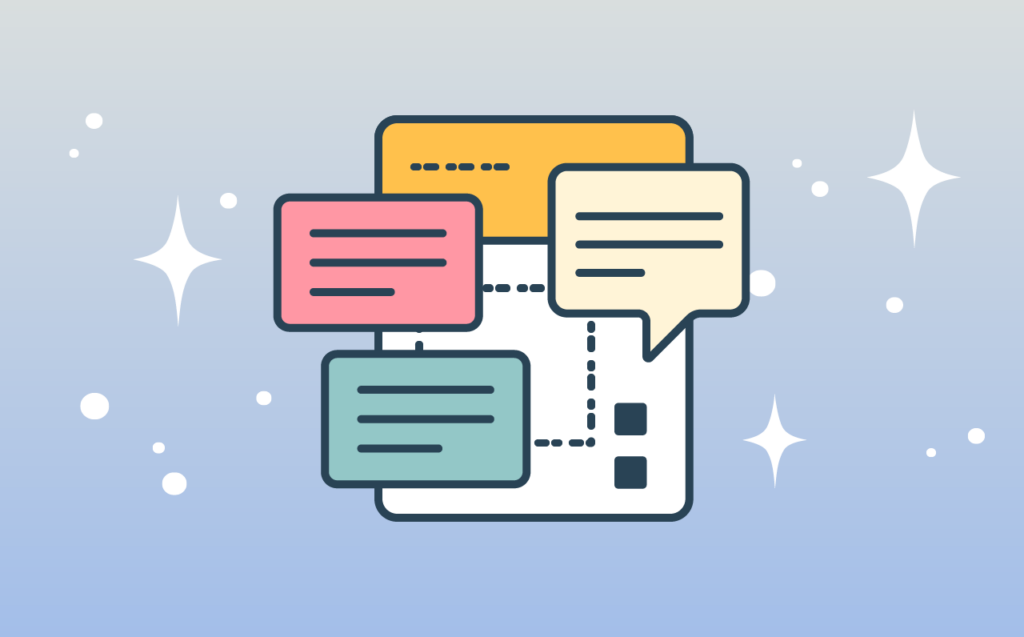Group therapy is at the heart of many behavioral health programs—especially in substance use disorder (SUD) care. But for providers, documenting these sessions has long been a challenge. It’s hard to remember and accurately capture who said what—not to mention meet strict compliance standards—without sacrificing time, energy, or note clarity.
We heard this predicament loud and clear, and we made it our mission to solve it. At our Summer 2025 Launch Event, Eleos CEO and co-founder Alon Joffe unveiled Groups Audio Sessions: a first-of-its-kind AI solution to ease the documentation burden in group settings.
During the event, Joffe sat down with Andrew Schmitt, LCSW, Interim Vice President of Operations at Gaudenzia—one of the largest SUD treatment providers in the Northeast—who shared how his team is using Eleos’ new Groups Audio functionality to:
- Give clinicians more space to focus on people instead of paperwork,
- Keep care consistent and high-quality, no matter the setting,
- Stay on top of tough compliance requirements without added stress, and
- Improve staff experience and retention by easing the documentation burden.
Read on for a recap of the highlights, or watch the full webinar recording here.
Moving from Caution to Confidence in AI
Clinicians at Gaudenzia were initially cautious about AI, worrying it might threaten client relationships. But after using Eleos, they realized its effect was the exact opposite of what they feared: they could actually be more present with clients when they didn’t have to worry about taking notes—and their documentation time was cut in half.
Gaudenzia’s individual therapy providers have been using Eleos to alleviate administrative burdens for years—but with 85% of the organization’s services delivered in group settings, staff were eager for a solution that worked in sessions with multiple participants. That’s why they partnered with Eleos to help develop the Groups Audio solution, and the official launch of this new technology has opened the door for the entire SUD industry to transform where it matters most.
Discover how the team at Gaudenzia reduced their note-writing time from over 10 minutes to just 4.8 minutes.
Solving the Group Therapy Documentation Dilemma
Behavioral health providers already shoulder some of the most taxing documentation in healthcare, and group sessions make things even more complicated.
Instead of taking notes on just one client, they have multiple individuals to keep track of—and historically, ambient listening tools (which typically ease the documentation burden) haven’t been able to parse through all the different voices in a group setting.
That’s exactly the gap Groups Audio Sessions was built to close. Available directly within Eleos Documentation, Groups Audio ambiently captures and analyzes group sessions with up to 15 participants—in telehealth, in-person, and hybrid settings. After the session, Eleos drafts a single group note plus individualized, compliant summaries for each participant—so clinicians can simply review and finalize, instead of reconstructing the conversation by memory or sifting through pages of handwritten notes.
“The breakthrough that we’ve worked on for the past couple of years is how can we distill individual voices, individual participants, and create this individual documentation per participant, which really alleviates the burden for clinicians,” said Joffe.
The Benefits of an Ambient AI Scribe for Group Therapy
When roughly 80% of note content is prefilled for the provider, group documentation feels less daunting—freeing them to stay present with clients and drastically reducing the time-consuming admin work that can lead to burnout.
Also, group sessions are often led by a mix of roles, including licensed clinicians, techs, and peer specialists. Eleos assists all staff members in not only completing their notes in a more timely manner but also in standardizing both note and care quality.
“Gaudenzia operates off of evidence-based care models, so it’s an ongoing goal of ours to ensure consistency through our service delivery model and have as much standardization as we possibly can,” explained Schmitt.
With real-time documentation guidance and actionable analytics for quality improvement, Eleos supports all SUD roles in ensuring consistency and preventing costly audit penalties and clawbacks before they happen.
Raising the Bar on Compliance in SUD
For decades, many SUD organizations prioritized client work over tech innovation and documentation quality, partly due to cultural resistance and limited funding. Now, as the industry has become increasingly regulated, providers are having to put more of a focus on paperwork.
Luckily, with Eleos Compliance, every note is automatically checked against key SUD requirements—think ASAM alignment and SMART, golden-threaded goals and interventions—with real-time flags for missing elements and potential audit risks.
“We had an external managed care organization that came through [to] do annual audits of our charts, and they were over the moon [with] the quality of the notes. I mean, they literally said, ‘These are some of the best notes that we’ve ever seen,’” explained Schmitt.
Plus, leaders get visibility across programs and clinicians to spot patterns early, coach proactively, and walk into audits with confidence rather than scramble after the fact.
ASAM Criteria, Baked In
The American Society of Addiction Medicine (ASAM) Criteria is the guiding force for SUD treatment. By generating note suggestions that align with ASAM criteria and other compliance requirements, Eleos makes it even easier for SUD providers to fulfill their administrative obligations.
As Schmitt explained, having ASAM criteria clearly defined in the body of the note is “such an asset” for auditing purposes and for clinicians to see the bigger picture.
See a side-by-side comparison of how Eleos makes notes more compliant. Download our Compliant Progress Note Examples here.
An Objective Lens on Care
When providers are left to document on their own, there can be some natural bias that creeps into their notes. But, with ambient listening, it’s sort of like having an objective third party observing and analyzing the conversation.
Through augmented intelligence, clinicians can capture insights they might otherwise miss or overlook, and then use them to create more specific and robust notes—which translates to both higher-quality treatment and fewer downstream clawbacks.
Obviously, this kind of technology isn’t replacing the crucial work of clinicians, but it does serve as a critical resource to make that work a little easier.
Making Change Management Work
Of course, with any new technology or change in workflow, there will be some bumps in the road. Providers may initially be skeptical of AI, and clients may resist its use during sessions.
“There’s a tremendous amount of change management that goes into it. There is a lot of work from a cultural perspective, from a workflow perspective, and in terms of [AI] implementation,” Schmitt shared.
Successful AI implementation starts with the right partner. A collaborative, ongoing relationship with your AI vendor makes all the difference in getting off on the right foot and delivering the best training and support to your team.
Once your providers are bought in, it’s crucial to prepare them for potential client pushback. Arming them with talking points like these is a great place to start:
- “Eleos analyzes on the fly, so there’s no recording or transcription of our conversation.”
- “This is just a tool we use to assist in taking better notes for our documentation.”
- “Using Eleos allows me to be more present during our sessions.”
Typically, this kind of open communication from the start eases any worries the client may have. But if a particular group resists, Schmitt recommends pausing and reintroducing the technology later. Respecting client comfort improves long-term adoption.
As Schmitt noted, “The vast majority of the clients either don’t care about us using Eleos or they appreciate it because it allows for their counselor to be more attentive and engaged in the session.”
Measuring the ROI of AI
Now, to the first question many leaders ask: what’s the return on investment for a solution like Eleos? At Gaudenzia, two main signals guide how they measure impact: staff retention and productivity.
Schmitt said Gaudenzia has seen a significant improvement in employee satisfaction and retention among staff who consistently utilize Eleos.
“That is a long-standing and very consistent message from the staff—that they appreciate Eleos, what it does for them, and the time it saves them,” Schmitt shared.
When annual staff churn can reach 30% or more in behavioral health and SUD, retaining more providers saves organizations hundreds of thousands of dollars—making it one of the biggest ROI levers for AI tools.
Retention is one side of the equation; productivity is the other. When providers are able to finish their notes faster, they have more time to conduct follow-ups, meet with more clients, and manage their caseload more effectively overall.
But numbers are only part of the story—the most important return shows up in the sessions.
Staying Focused on What Matters Most
SUD and behavioral health providers chose this work to help people. However, group documentation is complex—and it can pull attention away from the important conversations at the heart of compassionate care.
That tension shows up in the moment-to-moment realities of group work.
“If I’m running a group and I know the expectation is that I write comprehensive, quality notes, I’m probably scribbling things on a pad—but as I’m writing, I might be missing something,” Schmitt explains. “If we take that need away and it just allows me to be that much more present, then I am more connected and attentive to the clients.”
When AI takes on some of the administrative load, clinicians can refocus on what really matters: delivering exceptional care to every single client.
As demand for behavioral health and SUD services grows—and documentation expectations rise with it—providers need tools designed specifically for the care they provide, including group therapy. Eleos helps group providers capture the conversation, standardize documentation, and meet SUD-specific compliance requirements without compromising the quality of care.
As Schmitt put it, “That becomes the benefit of technology… if you’re able to be freed up and have it done for you, why would you not take advantage of that?”
Interested in Groups Audio Sessions? Request a personalized demo today.

